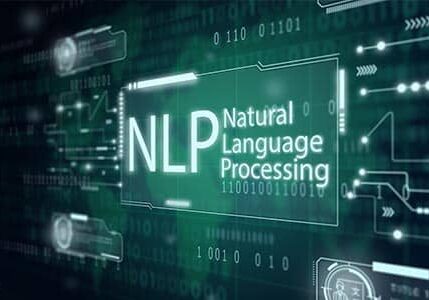The Expanding Role of Quantum Neural Networks in Natural Language Processing
Dr. Alexander Tuzhilin, Dean, Computer Science
Updated: December 22, 2023
Published: November 13, 2021

Natural language processing (NLP) uses artificial intelligence (AI) to enable machines to understand/respond to text or voice data using text or speech of their own. It makes them smart enough to carry out conversations and decipher human language. NLP is indeed all around us, empowering speech-to-text dictation software, voice-operated GPS systems, and chatbots, to name a few. It is helping reshape how businesses operate by boosting efficiency and customer service, and also powering products of consumer convenience, such as personal assistants such as Amazon’s Alexa, Google Home, Siri, etc.
Siri, the robot inside your iPhone, for instance, understands and executes your commands utilizing NLP and speech recognition technology. Through machine learning, Siri ingests data from myriad voice samplings to learn and train itself to understand variations in accents, inflections, and pace of speech. NLP enables Siri to understand, process, and speak language in the same way as humans do. Even though these technologies are impressively capable, their reliance on traditional computing methods can be rather limiting.
Traditional NLP on computers employs a bag of words approach that works using strings of words, defining each word individually, rather than connecting them together with attention to their grammatical structure or composition. Since people don’t always use the same words to convey the same points, this approach sometimes results in failure to understand the user’s intent. Additional challenges of NLP through classical computing include being unable to decipher sarcasm, synonyms, or slang. To overcome these challenges, researchers at Cambridge Quantum Computing are testing quantum neural networks and quantum computers to improve upon artificial intelligence and natural language processing capabilities with the application of quantum neural language processing (QNLP). They have developed the Cambridge Quantum’s software toolkit for QNLP called lambeq, which is a first of its kind. It is designed to apply to many use cases, including: language generation, processing text-to-speech, text mining, automated dialogue, and bioinformatics.
To test quantum computing and natural language processing, the Cambridge researchers represented sentences as parameterised quantum circuits (PQCs). What they found is that the “natively quantum” structure of natural language could make it possible for machines/computers to fully understand complete grammatical texts and sentences. They explained that that language is inherently suited for quantum computers since the “compositional structure governing language is mathematically the same as that governing quantum systems.”
Thus, with quantum neural networks, natural language processing capabilities are dramatically expanded. Quantum natural language processing may be able to process a grammar-aware representation of language that has not been achievable via classical computing methods. Although the application of quantum neural networks is currently in its nascent stages, companies and researchers alike are seeking to better understand the quantum advantage that can be gained from their use.
Despite the promising future, there are still some hurdles that quantum computers must overcome for widespread use. Quantum computers are greatly impacted by environmental factors, such as temperature changes or vibrations. So these machines will have to become much less sensitive in order to function effectively in most locations. However, the Cambridge Quantum Computing team and other researchers and scientists have already proven that QNLP can greatly enhance machines’ ability to process natural language and respond with a deep understanding of meaning. Once quantum neural networks and quantum computers become the norm, it may be possible to solve the inherent challenges of artificial intelligence and expand the use cases of natural language processing.
